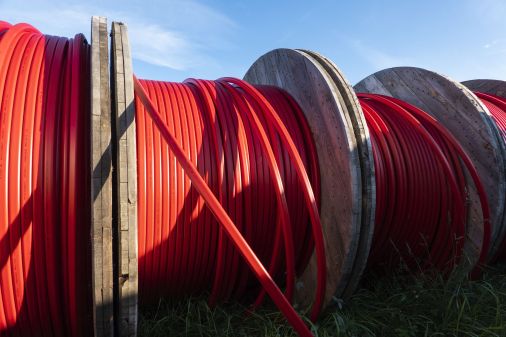Income, education drive gaps in metro area broadband adoption – study

Big gaps persist between broadband adoption rates in the nation’s largest metropolitan areas, leaving room for action by federal, state and local leaders, according to a new analysis by the Brookings Institution.
The group’s Metropolitan Policy Program last week published its analysis of U.S. Census Bureau survey data about the proliferation of high-speed Internet in America’s 100 largest metro areas. While researchers did find those areas have a slightly higher adoption rate than the country as a whole — 77.8 percent of the metropolitan respondents have broadband, compared to 75.1 percent nationally — they also found gaps of 30 percentage points or more between the different areas.
Indeed, some areas have adoption rates well over 80 percent, with San Jose, California; Anchorage, Alaska; and Bremerton-Silverdale, Washington topping the list. However, others lagged below 60 percent, namely the Laredo and McAllen-Edinburg-Mission areas of Texas.
“For many of us, it’s a given, we take it for granted that we have a high-speed connection in our pockets as well as inside our homes,” Adie Tomer, a Brookings fellow and one of the paper’s authors, told StateScoop. “We wanted to explore that digital divide a little bit more, and in particular, we wanted to get a better understanding of it on the sub-national level.”
Tomer noted that his team of researchers also developed a regression model to help get a better sense of the demographics of the respondents to understand what factors affect broadband adoption. While some of the results of that analysis conformed to logical assumptions about the availability of high-speed Internet, he said others were more enlightening.
Unsurprisingly, household income proved to be a key factor in determining whether respondents had broadband access. In an analysis of survey data from 2014, the researchers found that just 46.8 percent of households with total annual incomes under $20,000 had high-speed Internet access, compared to the 88.8 percent of households making $50,000 or more per year.
“Broadband is not a highly regulated industry, in particular by pricing,” Tomer said. “So income is going to make a difference in who can afford to have not just a smartphone in their pocket, but have an LTE-speed connection to it, same thing in the home.”
Tomer said that education was the other significant determining factor his group noticed. They found that 91.5 percent of 2014 respondents with at least a bachelor’s degree had broadband service, while just 54.1 of those without a high school diploma did.
“People who achieve more schooling, even if they’re much older, may have a higher proclivity to figure out what the Internet is and gain the digital skills to be able to take advantage of it,” Tomer said.
The influence of age, Tomer noted, was not nearly as much of a factor as the researchers expected. Instead, the ability of respondents to telecommute played a much larger role in broadband adoption. The model showed that, for every 1 percent rise in the share of telecommuters in a region, there was a corresponding 1 percent rise in the high-speed adoption rate.
Those findings are prompting Tomer and his group to implore public and private sector leaders to tailor their efforts to improve high-speed Internet access to match those factors.
While Tomer cautioned there’s “no silver bullet where one single program is going to change the game,” there are some policies that could help improve broadband adoption on a regional scale. In particular, Tomer said states and localities can work more closely with Internet providers to develop equitable pricing rates, and even devote more time and money to digital literacy training programs to help those without the benefit of an advanced degree learn about the benefits of broadband access.
“There’s a big correlation between those who aren’t online and those who aren’t aware of all the activities that they can gain increased benefit from,” Tomer said. “If you don’t know Amazon is out there selling cheaper goods, that kind of ruins your incentive to get the digital skills and invest in a broadband connection to tap into some of the savings.”
Additionally, Tomer said state governments, and even local ones to a lesser extent, can adopt some of the federal government’s more liberal policies around allowing telecommuting.
“It can take drivers off the road and open up transportation capacity at the same time,” Tomer said. “More room on the road, cost savings from moving people around, more people getting online and understanding the benefits of it.”
Yet Tomer said much of the push to open up high-speed Internet access to lower income people will have to come from the top down.
“Right now, there’s no federal regulatory position on whether broadband is a right as an American and whether it should be priced accordingly based on, say, different levels of income,” Tomer said. “That’s going to have to be decided in Washington.”





